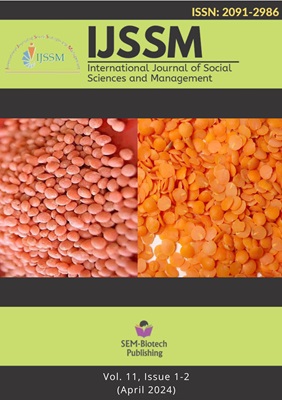Impact of Value Added Tax on Indirect Tax and Total Tax Revenue: An Empirical Study from Nepal
DOI:
https://doi.org/10.3126/ijssm.v11i1-2.65240Keywords:
Sales tax, generation, significant, multicollinearity, variationsAbstract
This study examines the impact of value-added tax on indirect tax and total tax revenue collection in Nepal. The secondary data that covers 48 annual data points collected from the various economic surveys are used in this study. Descriptive and exploratory research designs are used. Some statistical and econometric tools like graphs, scatter plots, regression analysis, variance analysis, multicollinearity test, normality test (Shapiro-Wilk), and heteroscedasticity test are used. VAT revenue is statistically significant in determining Indirect tax and total tax revenue in Nepal. One percent increase in value-added tax results in 0.919 and 0.944 percent increase in indirect tax and total tax revenue in Nepal. A variation of 98.9 percent in indirect tax and 97.8 percent in total tax revenue depends upon VAT in the Nepalese economy. Policymakers in Nepal might use these findings to make informed decisions regarding VAT rates and policies, recognizing the substantial influence of VAT on overall tax revenue.
Int. J. Soc. Sc. Manage. Vol. 11, Issue-(1-2): 27-33.
Downloads
Downloads
Published
How to Cite
Issue
Section
License
Copyright (c) 2024 International Journal of Social Sciences and Management

This work is licensed under a Creative Commons Attribution-NonCommercial 4.0 International License.
This license enables reusers to distribute, remix, adapt, and build upon the material in any medium or format for noncommercial purposes only, and only so long as attribution is given to the creator.




